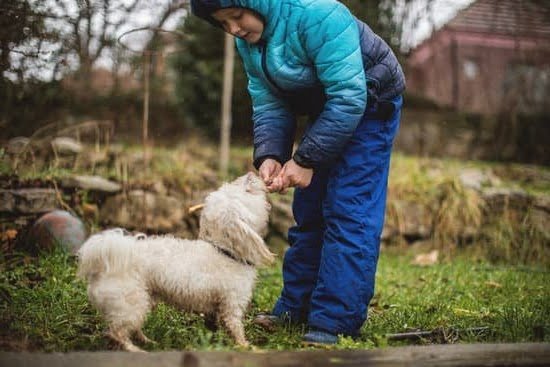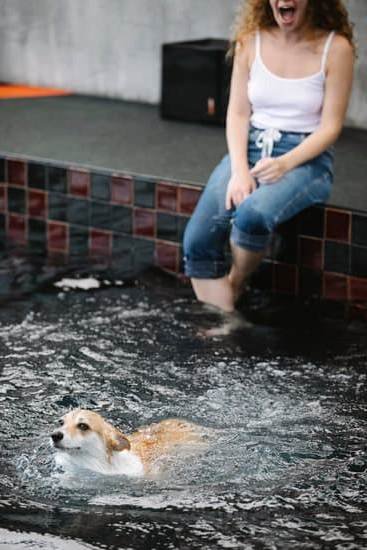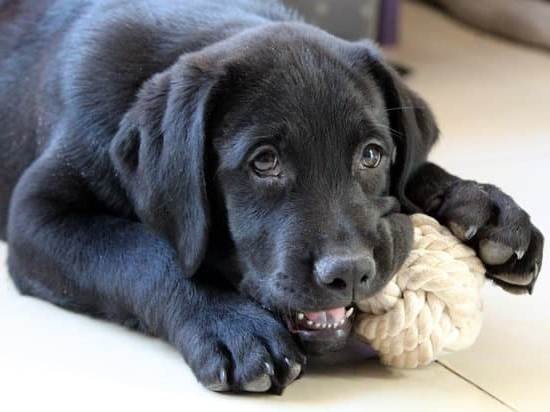Introduction
Toilet training is one of the most important aspects of proper pet care, and it is even more critical for older dogs. It can play a role in protecting your dog from a wide range of potential health problems, as well as relieving indoor environmental stress. By toilet training an older dog, you can help to prevent the development or worsening of certain medical conditions such as urinary tract infections and bladder stones. Toilet training also helps reduce odors throughout the home caused by pet waste, and helps keep the environment protected from potential parasites. Additionally, taking your time to properly toilet train an older dog will also help improve their quality of life as they age — adopting new and improved behaviors that can further keep them safe and secure in their surroundings.
Preparation
When it comes to toilet training older dogs, preparation is key. You must first take the time to understand your dog’s preferences and habits. Many owners incorrectly assume that older dogs are difficult to train because they are ‘set in their ways’ but this couldn’t be further from the truth; with patience and understanding you can help an older dog learn new routines and behaviors.
It is important to research the breed of your particular dog, as some breeds may require a different approach than others. Additionally, you should also observe your individual dog and note patterns/preferences regarding toileting; does he always relieve himself in the same spot? Is there anything that seems to trigger a need for him to go? Once you have identified any certain tendencies it is important you encourage consistency in those areas whilst guiding him toward his new housebreaking regimen. Providing regular, scheduled potty breaks can help establish a strong sense routine; even if the initial attempts result in failure, patience will eventually teach your pet that when given a potty break outside at regular times throughout the day they will be rewarded. In addition to routine potty breaks, having clearly designated areas where your pet can do their business outside will also aid them in learning where appropriate toileting spots can be found. Finally, rewarding successful attempts whenever possible as well as providing positive reinforcement such as praise for non-elimination activities during potty trips can make all the difference in helping an older pet learn how to toilet train quickly and effectively.
Establishing A Schedule
To ensure success when toilet training older dogs, it is important to establish a routine that both of you can stick to. To do this, it may help to identify the times during the day at which your dog typically needs to go and map out the days accordingly. Once you have identified these times and any major activities throughout the day, establish a consistent schedule for toileting. For example, plan to take your dog outside for a bathroom break once in the morning after breakfast, once after lunch, once during evening play time and again before bedtime. Depending on your schedule, also consider taking your dog out every few hours during the day if necessary. Taking your dog outside at regular intervals gives them an opportunity to learn when and where they should eliminate, which will promote quicker learning in the process. Additionally, be sure to reward them with treats or verbal praise each time they do their business outside- this will encourage and reinforce good toilet habits.
The Training Process
To properly toilet train your older dog, you need to follow specific steps. These will help ensure your pet is well-mannered and develops good habits quickly. Here is a breakdown of how to toilet train an older dog step-by-step:
1. Establish a Routine: To create consistency, start by establishing a regular routine for your pet. This should include specific mealtimes, potty breaks, playtime and quiet times each day.
2. Learn Which Signals Breed Comfort: Different breeds have unique signals to tell when they need to go potty. As soon as you recognize these signals from your pet, take them immediately outside for their designated potty break area or inside the designated spot in case of rainy weather.
3. Provide Lots of Positive Reinforcement: One way to encourage positive behaviors from your pet is by providing them with lots of positive reinforcement when they do what they’re supposed to do. This could be anything from verbal praises like “good job!” or treats every time they use their designated spot correctly.
4. Give Them Time Out For Misbehaving: It’s normal for dogs to make mistakes while being trained so a time out may be needed if the misbehaviour persists such as when your pup continues to soil inside the house after being taken outside for their break numerous times already.. Even though it feels counteractive, it’s important that you provide this negative feedback so that the pup knows which behaviour doesn’t get approved in order to help correct their behaviour eventually.
5. Remain Patient: The most important tip while teaching any older dog is patience since it can easily lead to frustration as results don’t happen over night and different progress rates happens with every pup.. Taking small steps daily can help create better outcomes in the long run but try not compare progress rates with other training cases as progress rate varies greatly among different cases depending on various factors; both related and unrelated environment ones affecting the pup’s behaviour learning curve
Rewards
Rewards are one of the greatest tools when it comes to toilet-training older dogs. Positive reinforcement is essential in order for your dog to understand what is expected of them when it comes to toileting outside. Here are a few tips for effectively utilizing positive reinforcement:
1. Timing: Rewards should be given immediately after the desired behavior occurs, so that your dog can link the reward with their behavior. This timing is important, as if they don’t receive the reward directly after successfully toileting outside, they may not understand why you are rewarding them.
2. Variety: Dogs get bored easily and need variety in order to stay engaged in learning new things. Variety can include food rewards, verbal praise or playtime together. Though you want to give consistent reward types – just one or two depending on your preference – mixing it up keeps it interesting!
3. Quantity: Both quantity and quality matter when giving rewards for successful toileting. It’s important to choose high-value rewards (preferably something that your dog does not usually have access to). Giving too many smaller rewards for toileting won’t be as effective as fewer but more valued incentives; size matters too. Additionally, larger amounts of treats will signify more importance than smaller rewards will over time, helping shape better habits in the long run!
Don’t Forget The Basics
Toilet training an older dog can be a challenging but rewarding experience. Before you begin, it’s important to stock up on a few essentials in order to make the process effective and as stress-free as possible. First of all, it would be wise to get a crate or pet gate in order to limit your pup’s access to areas of the home that they may not yet be potty trained for. It’s also helpful to buy water-resistant mats in key areas around the house or apartment so that you can easily soak up any accidental messes. To encourage good behavior, doggy treats are a good idea – reward them when they correctly use their potty spot so that they associate positive reinforcement with the activity. Lastly, puppy pee pads can be placed outside and inside the home so that if there is an accident you can quickly contain it before it becomes a big problem. With patience and consistency, toilet training your older pup should become much easier over time, and observing these basics is sure to help set your furry friend up for success along their potty journey!
Additional Tips
When toilet training an older dog, it is important to consider that the process may take longer for them to learn. Be patient with their learning curve and remember that success won’t come overnight! Also, try to pay attention to your pet’s body language so that you can get a better sense of when they need to go out.
When you are making changes or putting in place new routines for an older dog, be sure to do so gradually and never make major changes suddenly. Doing this will be less stressful for them and help them adjust more easily.
Additionally, reward positive behavior with treats but never punish or scold your dog if they make a mistake. This could set back the progress, cause confusion, and lead to stress on your pet.
Finally, before the start of training, it is always best to speak with your veterinarian who can provide tailored advice depending on your pet’s age, medical condition and lifestyle needs.
Finishing Up
When it comes to toilet training an older dog, the process can often seem particularly daunting due to the fact that most dogs are already established in their current habits. However, through patience, consistency and redirection of these behaviors, it is certainly possible to successfully toilet train an older dog. When trying to toilet train an older dog, it is important to remember that they are being asked to relearn and accept new rules. To maximize the likelihood of successful toilet training:
1) Assure that you maintain a regular schedule for your older dog – offering potty breaks before meals and when waking up from a nap. Sticking to this schedule helps strengthen muscle memory so there is less guesswork for your senior pup when choosing where and when to go.
2) Create an ongoing reward system for your dog; rewards should be both verbal and physical in nature. This reinforces desired behaviors such as trips outside or using the designated areas indoors That leads them back into learning what you expect from them during potty time.
3) Meanwhile, have zero tolerance for mistakes by firmly redirecting him/her if needed. Try not to become angry though as this will just lead to fear and confusion on pets’ part. It’s also important not to punish since punishing for something after-the-fact won’t make any sense in their mind — their natural instinct will still direct them away from the appropriate area even if they are aware they are being reprimanded.
4) Construct a comfortable potty place in advance both indoors and outdoors and use positive reinforcement whenever they head towards these areas; this encourages good habits right off the bat! Finally keep distractions away while toileting – whether that means limiting interaction with children or banning toys/treats while they’re pottying – doing this can help focus their attention on the task at hand.
Conclusion
Toilet training an older dog is not typically a difficult process, and with consistent reinforcement, they can learn quickly. Reinforcing positive behavior and having plenty of patience and encouragement will help to shape their toilet training habits. Within a few weeks of training, your adult dog should be well on its way to being potty trained. Also, having regular walks and exercising your dog regularly will help establish the routine for successful toilet training.
To ensure that your older dog stays on the path towards proper potty training, it is best to remain consistent with rewards and reprimands. Dogs respond best when given praise for good behaviors, but punishment for negative ones should also be applied at appropriate intervals so that they do not become confused as to what is expected of them. A successful toilet training regimen requires patience from both you and your pup as it could take several weeks before all of the hard work pays off. Be sure to never give up, though; with a little bit of kindness and consistency, you’ll likely see progress within a couple weeks or less!
In conclusion, toilet training an older dog can be achieved with consistent reinforcement, positive behavior amplification strategies that are based on repetition as well as regular exercise routines before hand. Monitor progress closely while remaining patient throughout the entire process until success is attained. With enough patience and understanding from both sides of this equation you can rest assured that eventually this endeavor will bear positive results with minimal stress experienced on either end. Above all else don’t forget that persistent positivity will always outweigh any level frustration during this time frame; never give up hope that there’s a light at the end of the tunnel!

Welcome to the blog! I am a professional dog trainer and have been working with dogs for many years. In this blog, I will be discussing various topics related to dog training, including tips, tricks, and advice. I hope you find this information helpful and informative. Thanks for reading!





